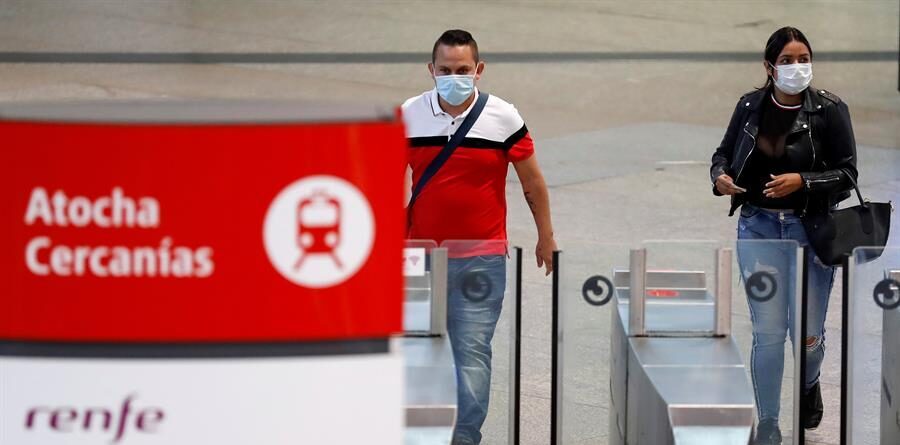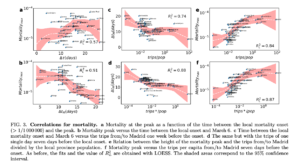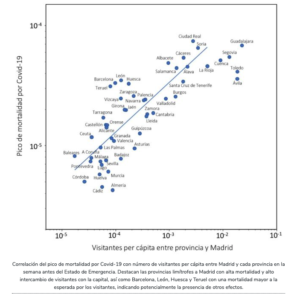21.05.2020 - 08:52
|
Actualització: 21.05.2020 - 10:52
Mattia Mazzoli, David Mateo, Alberto Hernando, Sandro Meloni and Jose Javier Ramasco have published a study that quantifies the relationship between travel in Spain and the coronavirus pandemic. It follows that 76% of the peak of the pandemic in Spain has its origins in the travel of people to and from Madrid.
Mazzoli, Meloni and Ramasco are researchers at the Institute of Interdisciplinary Physics and Complex Systems of the CSIC and the University of the Balearic Islands, while Mateo and Hernando work at Kido Dynamics, a mass data company based in Lausanne that has done a work on the dynamics of travel in Spain.
The findings of the study have been published without review in Medrvix and reported this weekend in this article on Naukas, one of the leading websites with scientific content in Spanish.
The authors say that they have measured the relationship between people movement and the spread of the pandemic: ‘In particular, we have compared the number of visitors among the main focus in Spain (Madrid) and the other provinces, from both residents of Madrid and people visiting Madrid, because both senses are important in the transmission.
The result is that ‘if we compare the peak of Covid-19 mortality in each province with the number of visitors per capita a week earlier (prior to the state of alarm), we find a direct correlation: a multivariate analysis tells us that 76% of the mortality peak is explained by mobility between each province with Madrid and its ratio to the local population. It’s not the only cause, but it’s the biggest one by far. ”
According to the study, ‘once Madrid was the focus, the spread of the epidemic from the capital to the rest of the territory has followed expected mobility patterns. If we compare the pattern of Madrid with that of Barcelona, the differences are clearly visible. Without a precautionary lockdown in the early days, this pattern of expansion was inevitable.’
The compared patterns between the trips from Madrid and Barcelona during 2019 come from the data of the telephone antennas:
According to the researchers, ‘the most virulent factor in Spain has been the large number of visitors who either went to the focus [of Madrid] or left it, in relation to the local population of other cities, which triggered the multiplying effect. Instead of the classic patient-zero model, we have multiple independent foci in a short period of time’.




